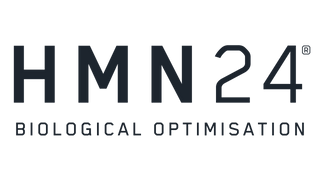If we don’t create the market, it doesn’t exist.
I read this quote at the weekend, and it resonated as it felt like exactly where we are as a brand.
Ironically, the quote originated from the founder of Red Bull, a beverage developed initially to combat jet lag and fatigue.
It has become a global brand based on a problem it didn’t solve, but made inherently worse.
Dietrich Mateschitz didn’t just co-found Red Bull; he engineered a market. Red Bull was initially conceived to combat jet lag and fatigue after long-haul travel. Mateschitz discovered the drink while travelling and immediately saw its potential for Western consumers, especially travelling executives and performance-driven individuals.
But here's the tension.
Red Bull’s functional origin (jet lag) was lost in translation as it became a lifestyle product.
The mechanism, high caffeine, sugar, and B vitamins, delivered a short-term boost, not long-term physiological alignment.
In truth, it didn’t solve jet lag; it merely masked its effects.
Where It Fell Short (Scientifically)
Caffeine is a blunt tool. It offers alertness but interferes with circadian recovery when used indiscriminately.
There was no real circadian support, no phase shifting, no nervous system regulation, no sleep architecture protection.
It became a performance amplifier, not a recovery tool, creating a reliance model, not a resolution model.
Its success didn’t come from solving jet lag. It came from rebranding arousal, from boardrooms to nightclubs to race tracks.
The Cultural Detour
As the brand scaled, identity shifted from a functional tonic to a social stimulant. Nowhere was this more obvious than in its fusion with alcohol.
This combo became a nightlife staple, yet it created a dangerous physiological disconnect:
- Caffeine masks the sedative effects of alcohol, giving users the perception they’re less intoxicated than they are.
- The result? Increased alcohol consumption, reduced inhibition, and greater risk-taking.
- Sleep is compromised. Recovery is blunted. And the original goal, combating fatigue, is completely undermined.
In short, it went from managing jet lag to disrupting circadian function further.
Solving What Red Bull Symbolised
HMN24 doesn’t ride the wave of caffeine culture; it addresses the underlying biology:
Jet lag mitigation through timed supplementation (RISE, PRE-SLEEP).
Circadian alignment through ingredients that support sleep, wakefulness, and rhythm synchronisation.
Arousal state management through modulation, not over-stimulation.
Where Red Bull offered a stimulant-led reaction, HMN24 offers a science-led protocol.

Red Bull created a culture.
HMN24 is creating a category.
How a Less-Than-Perfect Product Built a Giant
Red Bull proved something powerful: that emotion, identity, and function can converge to create a movement, an incredible movement and one that has supported sport in a way that is unimaginable. But in doing so, it left a gap, the gap between hype and health, between performance and longevity.
One, we now own.
Blog posts
The Science Your Meeting Room Is Getting Wrong
Most meeting rooms are designed for convenience, not cognition. Rising carbon dioxide, poor ventilation and environmental load quietly shut down the human brain long before the meeting agenda does. This article breaks down the science and explains why performance starts with the air we breathe.
Gym Equipment Manufacturers, Gym Spaces, and Why They Need to Adapt
The fitness industry is undergoing its biggest transformation in decades. Gym equipment manufacturers can no longer rely on selling hardware alone — modern users demand outcomes, evidence, personalised systems, and environments that support real human performance. This article explores the data, science, and commercial forces driving this shift.
The Hidden Architecture of Sleep: Why Three Microclimates Determine How Well You Rest
You don’t sleep on a mattress, you sleep inside three thermal microclimates that sit between your body, your clothing and your bedding. These microclimates determine how quickly you fall asleep, how deeply you stay asleep and how well you recover. This piece explains the science, the technologies that improve it, and how to optimise your environment even without tech.







